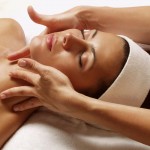Millions of people worldwide swear by massage treatments to relax their muscles, mind and spirit and to soothe their skin; But why? How does a regime of regular massages achieve this? And what other highly beneficial effects can different massage techniques have on the body? Here’s a run-down of how massages can help nine specific systems in your body:
Integumentary System (Skin)
Perhaps the most obvious part of the body that benefits from massages is the skin. As a masseuse rubs your skin, the friction that’s generated raises the skin’s temperature and causes blood vessels to dilate, which ensures nutrient-rich blood comes to the surface. Also, both the sebaceous (oil) and sudoriferous (sweat) glands are stimulated – aiding the natural cooling of the body and enhancing the skin’s condition.
If you suffer from a skin complaint, you should be careful when it comes to massages. It’s best to check with a medical specialist, but should you have any of the following you ought to avoid massages or undergo those that are adapted to your condition – acne, athlete’s foot, blisters, burns, ulcers, eczema, herpes, impetigo, lice, psoriasis, ringworm, rosacea, scabies and warts.
Muscular System
Another system of the body well known to gain from massages is muscles. Reduced soreness and fatigue, relieved tension and increased flexibility are all major benefits, while specific massage techniques can manually separate muscle fibres, the aim behind this being to reduce spasm frequency and acuteness. For those with weak muscles, regular massages tend to increase spindle activity which can lead to better muscle tone because the muscles will contract, while other people can enjoy improved motor skills.
There are several muscular conditions that massages aid (although, again an appropriate technique may need to be employed for some), including fibromyalgia, hypertrophy, muscle fatigue or cramping, muscular dystrophy, shin splints, muscle strains, tendinitis, plantar fasciitis, arthritis, fractures, kyphosis, lordosis, scoliosis, ligament sprains, temporomandibular joint and muscle disorders (TMJ) and whiplash.
Endocrine System (Hormone Glands)
Massage therapy is very effective in triggering the release of some hormones into the body (which is ultimately governed by the endocrine system – loosely speaking, the body’s glands). Massages are known, for example, to increase dopamine, which naturally leads to a reduction in both stress levels and depression. Furthermore, relaxation is prompted by massage-stimulated serotonin and nor epinephrine increases in the body, while stress levels can be lowered and the immune system improved by massages actively reducing the body’s cortical levels.
Note, however, that conditions connected to the endocrine system that may require you to undergo an adapted massage technique include acromegaly, Cushing’ disease, diabetes, hyperthyroidism, hypoglycaemia and hypothyroidism.
Nervous System (Nerve Impulses)
This system (the network of nerve cells and fibres that transmits impulses between parts of the body) is also widely acknowledged to benefit from frequent massages – especially in terms of reduced relaxation and stress and anxiety. Moreover, reduced pain severity can be a side effect of an increase of endorphins sparked by a massage. Relaxation fostered by massages are actually a result of less beta wave activity in the brain, while increased delta and alpha waves – also caused by effective regular massages – can aid relaxation and better sleep.
Nervous system-related conditions whose symptoms can be tempered by massages from professional treatments – such as Montcalm Hotel Spa treatments – include carpal tunnel syndrome, multiple sclerosis (in between flare-ups), nerve entrapment, Bell’s and cerebral palsy, paralysis, sciatica, thoracic outlet syndrome and, on occasions, transient strokes.
Circulatory System (Blood Flow)
This system (alternatively referred to as ‘cardiovascular’) is concerned with blood circulation and nutrient transportation in the blood. Among the many body benefits from massage, the circulatory system tends to gain most when it comes to lymph and the immune system. By aiding the circulation of lymph, massage techniques help the necessary flushing of lymph through the body. In turn, this helps decrease lymphedema-caused swelling, which itself leads to weight loss as the body retains less fluid. The immune system benefits because massage scan stimulate increased levels of lymphocytes in the blood.
The following circulatory or cardiovascular-related disorders can be helpfully addressed by massages: anaemia, angina, congestive heart failure, controlled hypertension, strokes (during rehabilitation), chronic fatigue syndrome and lupus.
Respiratory System (Breathing)
It’s believed that regular massage treatment can play a very positive role in strengthening the respiratory muscles, the effect of which is improved pulmonary function (which includes the vital capacity of lungs, expiratory volume and peak expiratory flow). Moreover, massagescan promote discharge of fluid from the lungs, thus reducing tension in the laryngeal region (throat area). Respiratory conditions that can benefit from massages are apnoea, asthma, bronchitis, laryngitis and sinusitis.
Digestive System
The physically soothing effect of massage treatment works very well in promoting good colon function and can also relieve constipation and wind (or gas).
Urinary System
Frequent massage, believe it or not, also aids in cleansing the body when it comes to urine, as it can help increase metabolic waste levels (which are naturally found in urine, for obvious reasons) and may also aid the increasing of urine output in general.
Those suffering from conditions connected to the digestive and urinary systems will benefit from regular massage therapy too then; such conditions being constipation, diverticulosis, haemorrhoids, hepatitis (after the end of the infectious phase), obesity, ulcers, gout (after the acute phase) and urinary incontinence.
Skeletal System (Bones)
The body’s skeletal system is made up of 206 separate bones. It’s a lesser known fact that massages can certainly benefit your bones, most specifically in healing fractures, as the increased circulation a massage promotes draws more blood vessels around a bone break, while it also results in increased mineral retention.












